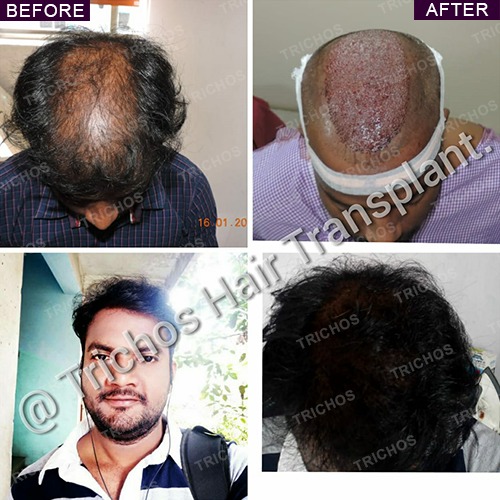Right Sleeping Posture After Hair Transplant
The right sleeping posture after a hair transplant is a very crucial aspect that can make or mar the successful outcome or entirely upset the results.
In this educational video, renowned trichologist, dermatologist and one of the top hair transplant experts in Hyderabad Dr John Watts offer practical solutions and tips on how one can adopt the right sleeping posture after undergoing a hair transplant.
“The result can get affected if one is not careful after a hair transplant surgery,” explains Dr John Watts, who has performed over 1900+ hair and bear transplant surgeries successfully.
In fact, the sleeping posture that one has to adopt (for a temporary period only) depends upon the area of the scalp where the hair grafts are implemented.
Front Hair Transplant: Precautions
If the hair grafts are implemented on the front of the scalp with donor hair obtained from the back of the scalp, ideally one is advised to sleep on the back with two extra pillows for more comfort.
“The two postures to avoid in such a scenario are sleeping upside down and sideways, both of which may be harmful to the transplanted hair,” informs Dr John Watts in the video.
Sleeping upside down can bring the implanted grafts directly in contact with a hard surface, damaging them in the process.
The same is also the case with sideways sleeping posture. “In this condition, the gravitational pull can lead to swelling in the sides. Hence, this too has to be avoided for a temporary period till the healing process starts,” explains Dr John Watts in the video.
Right Sitting Posture:
Even concerning sitting posture, those who had undergone a hair transplant on the front region of the scalp needs to maintain precautions so that the grafts are not disturbed.
“The best technique to adopt while in a sitting for reading or working on the laptop, computer or even when one is using a phone to type something is to maintain eye-level,” advises Dr John Watts in the video.
While answering his self-query as to how long one has to follow this precaution, Dr John Watts says that it is for a temporary period till the healing on the implanted region starts.
“The implanted grafts need some time to get imbibed into the scalp. For this, some sacrifice has to be made,” he adds.
Crown Hair Transplant: Precautions
When it comes to hair transplant on the crown area, Dr John Watts advises against sleeping on the back as the implanted grafts may come in contact with the external surface and get disturbed in the process.
“The best sleeping posture in this condition is to sleep upside down. Sleeping sideways is also allowed but for a limited duration only,” says Dr John Watts.
Similarly, when one is using a headrest on the car seat or trying to sit on a chair or sofa, one needs to ensure that the back of the scalp does not touch the surface.
In the educational video, he also advises against going for a hair transplant on a larger portion of the scalp as “unscientific” as such a decision may lead to over-harvesting of hair grafts.
“Overharvesting of hair grafts is not an advisable step. One must always try to go for hair implants on a limited region of the scalp. Hair transplant on a large area can sometimes result in shock hair loss,” says Dr John Watts in his concluding remarks while urging viewers to share the video among their friends for awareness.
We at Trichos provide premium hair transplant services in Hyderabad. Reach us for more information!
Book an appointment for expert guidance


About
Causes
Alopecia
Restoration
Procedures
Locations
Disclaimer: While hair transplants are generally safe and effective, as with any medical procedure, there can be minimal and temporary side effects based on specific or underlying medical condition of the individual patient. Please consult in person with our qualified medical team at Trichos for a thorough assessment of your specific condition and individualized guidance on the potential risks and benefits associated with our hair restoration treatments.
Learn more about Medical Consent for Surgeries.



